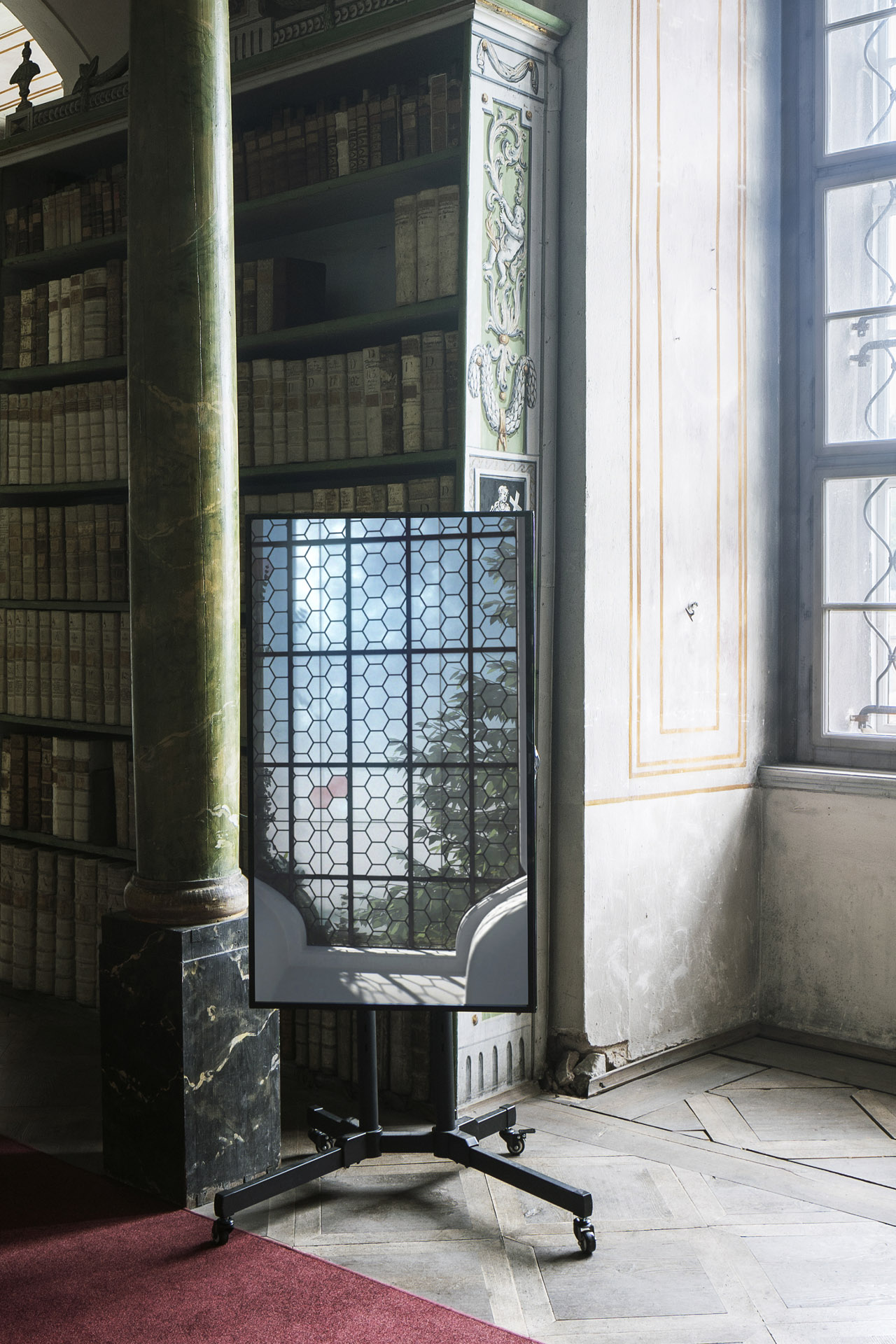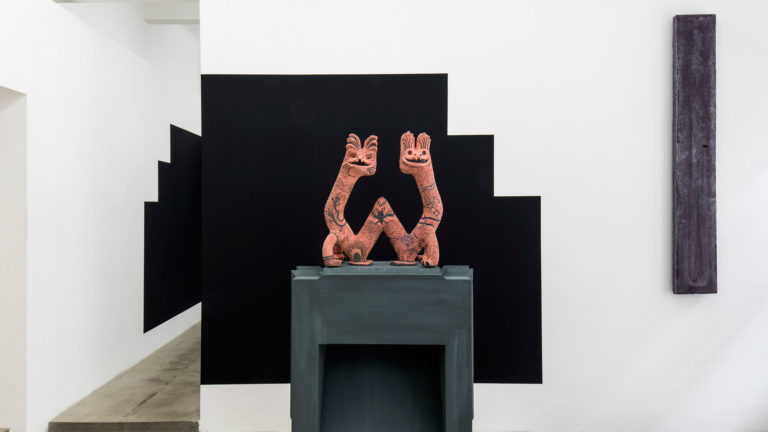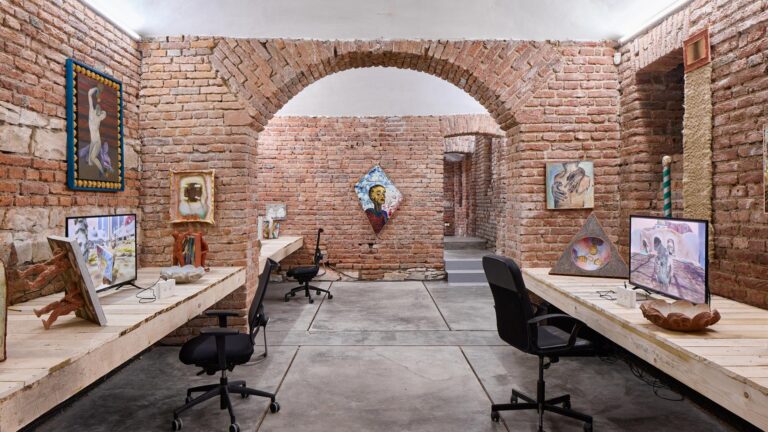Artists: Ed Atkins, Kamilla Bischof, Jesse Darling, Liam Gillick, Martin Kohout, Florian Meisenberg, Slavs and Tatars
Exhibition title: Ora et lege
Curated by: Monika Čejková
Venue: Broumov Monastery, Broumov, The Czech Republic
Date: June 19 – September 30, 2021
Photography: all images copyright: Educational and Cultural Center Broumov and Tomáš Souček
Note: Exhibition guide is available here
The exhibition project Ora et lege is a dialogue between contemporary art and the essence of the teachings of the Benedictines, the oldest religious order in Western Christianity. The venue of the exhibition is the Benedictine monastery in Broumov, where artists Ed Atkins, Kamilla Bischof, Jesse Darling, Liam Gillick, Martin Kohout, Florian Meisenberg and Slavs and Tatars have prepared works referring to the history, knowledge, teachings and spiritual culture of the Benedictines. The author of the project is the exhibition curator Monika Čejková, who prepared it based on her discussions with Archabbot of Břevnov, Petr Prokop Siostrzonek OSB.
One of the first questions a contemporary art viewer might ask is why, in a secular age, hold an exhibition inspired by an ancient religious order. The answer may lie in its strong tradition linked to the activities through which the Benedictines have worked hard to develop culture and education in our country. The Benedictine order is still an important representative of spiritual and cultural memory, including values that persist to this day. Last but not least, the exhibition relates to the premises of the Benedictine monastery in Broumov itself, a historically and visually unique place, providing a specific context that is not neutral and thus co-shapes the final form of the exhibited works. Nevertheless, the project Ora et lege is an attempt at a deeper dialogue between contemporary art and the teachings of the Benedictine order. It responds to particular elements that capture the essence of the Benedictine order and various selected elements of the Catholic Church in general.
The title of the exhibition Ora et lege (pray and read) paraphrases the famous motto of Saint Benedict, ora et labora (pray and work), and represents a key factor in the selection of the exhibiting artists. These are internationally renowned artists who in addition to their fine art production have been involved for a long time in writing their own texts. The exhibition touches on topics associated with the monastery, but it also reflects a narrative turn in the visual arts, whereby authorial writing in various forms is brought to the fore, combining different literary forms and genres such as prose, poetry, drama, fiction or “uncreative writing”. Authorial writing is presented at the exhibition in the form of Liam Gillick’s book, Jesse Darling’s e-mail correspondence, the essay by Slavs and Tatars, the incorporation of writing by Kamilla Bischof into her exhibited works and by Ed Atkins into the original monastery furniture, Florian Meisenberg’s software-generated text, and Martin Kohout’s text published online during the exhibition.
The exhibition covers several thematic areas, which are not strictly defined, but rather loosely associated in the works by individual artists. One of the thematic areas could be characterized as the media revolution reflecting mimesis and medieval images – the sacred and its representation (Liam Gillick, Florian Meisenberg, Kamilla Bischof). Another area is hagiography, which has become a means for pointing out the importance of women in the Catholic Church as well as for reflecting on their unequal status in the church hierarchy as an analogy to the state of society in general (Jesse Darling, Kamilla Bischof). This is followed by the ever-present theme of interreligious dialogue in the form of a critical polemic against deep-rooted stereotypes of national identity, power, language and religion (Slavs and Tatars). The last thematic area is a secular or rather an ambiguous relationship to the Church (Ed Atkins, Martin Kohout), which on the one hand honors its tradition and history, but on the other hand prefers or professes secular humanist ideals.
The project will be realized as a site-specific exhibition on the unique historical premises of the Benedictine monastery in Broumov: in the church of St. Adalbert, its sacristy and mortuary chapel, as well as in the monastic library and in the refectory of the monastery.








































